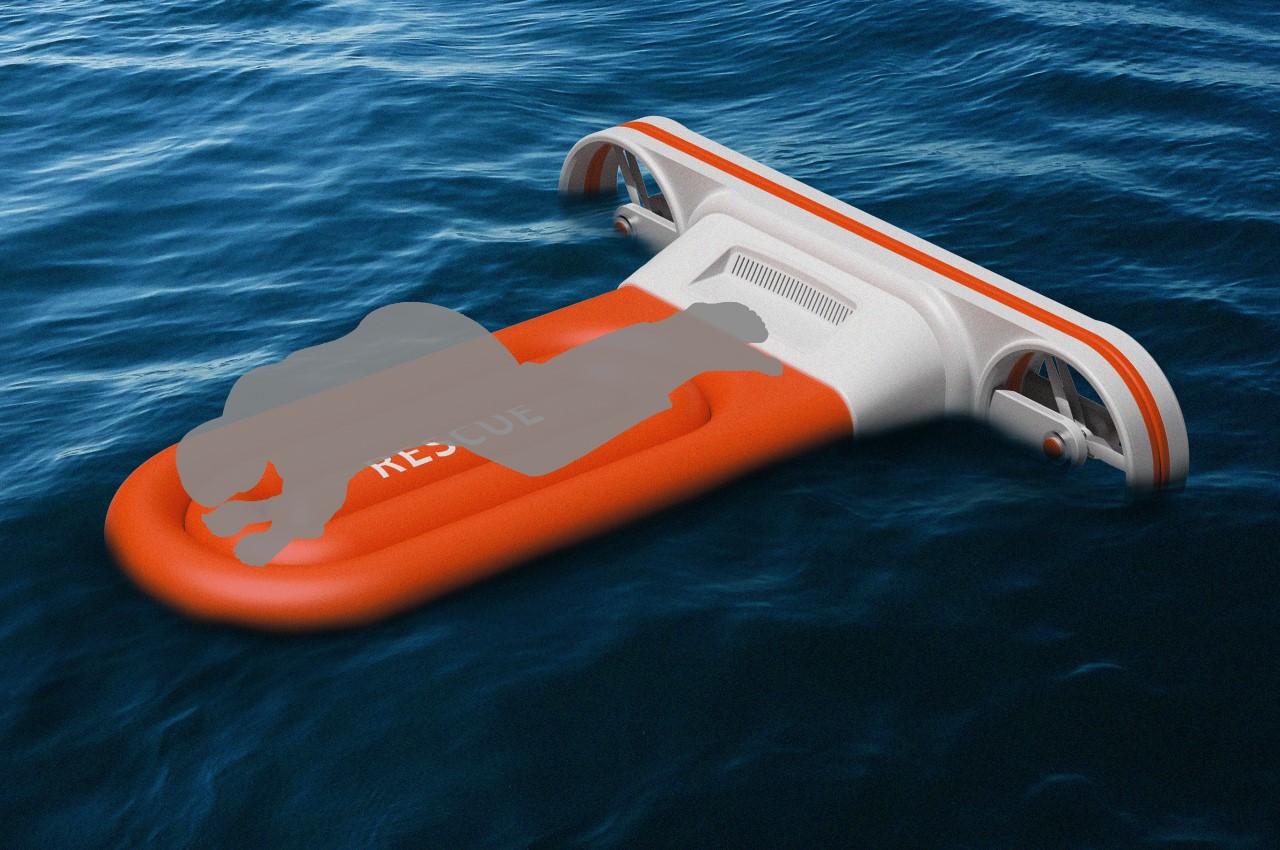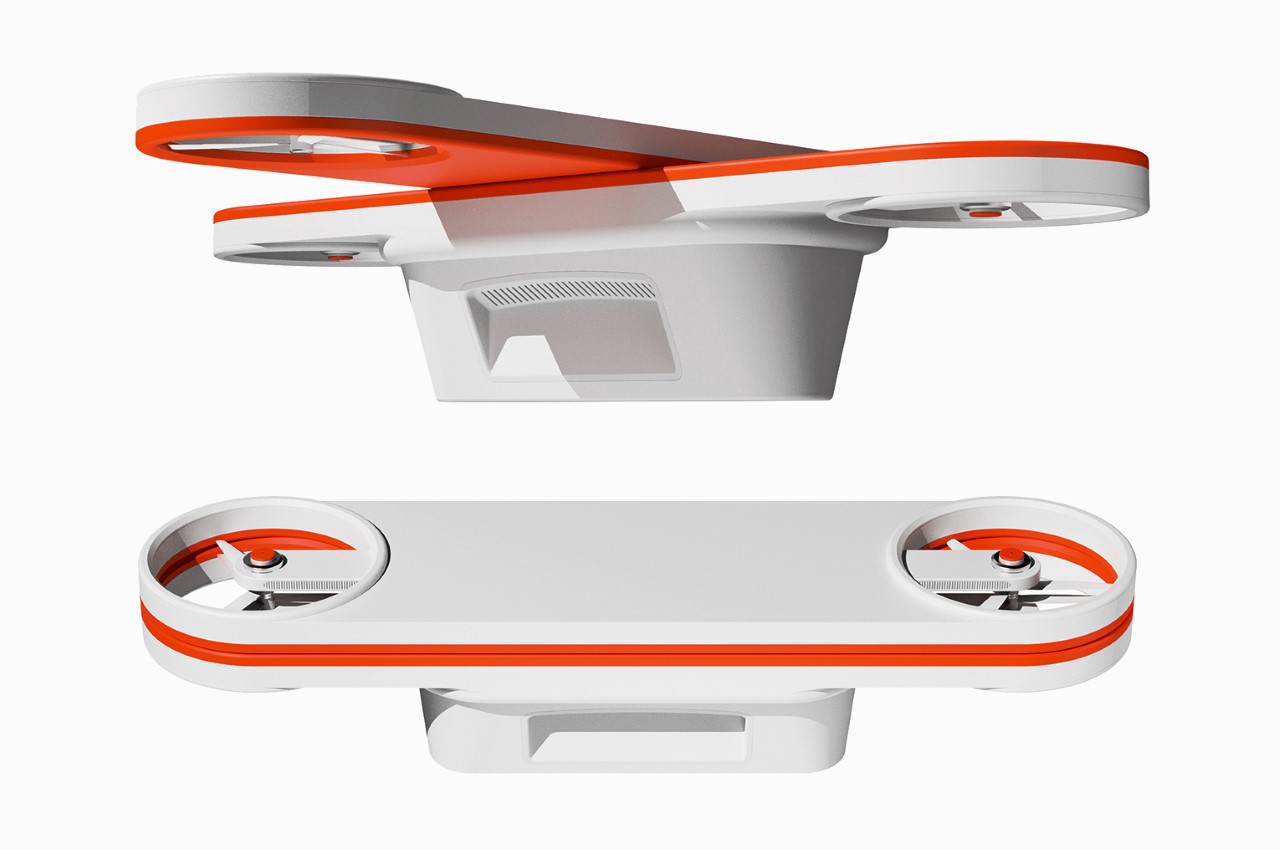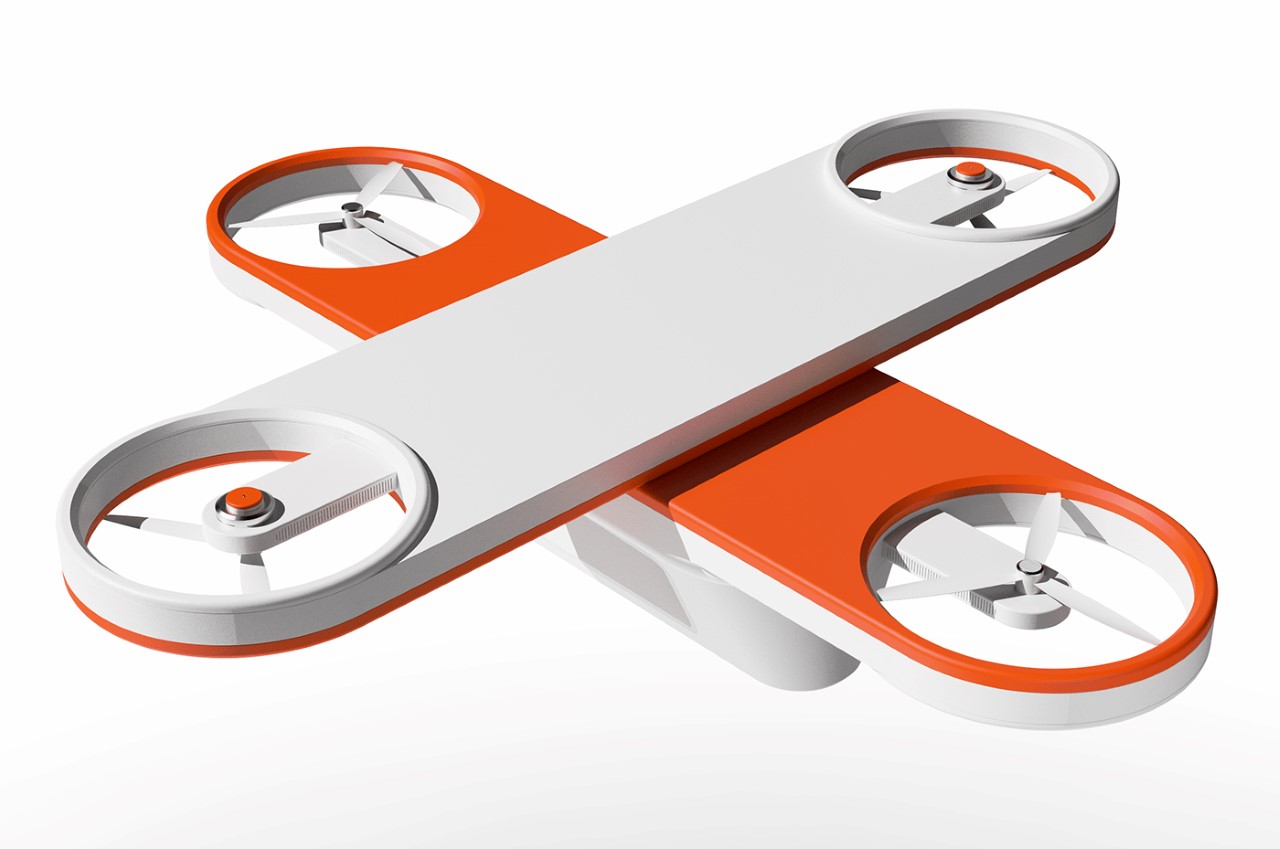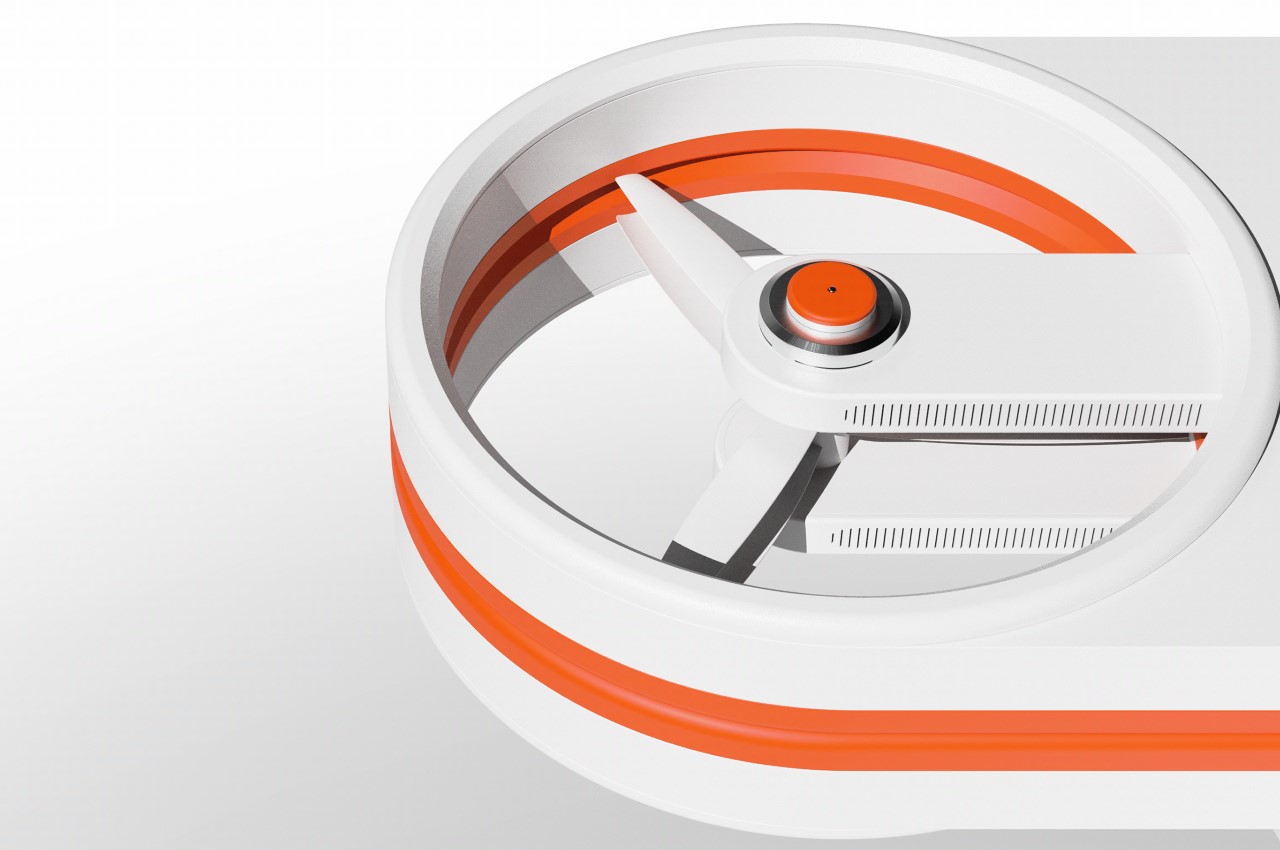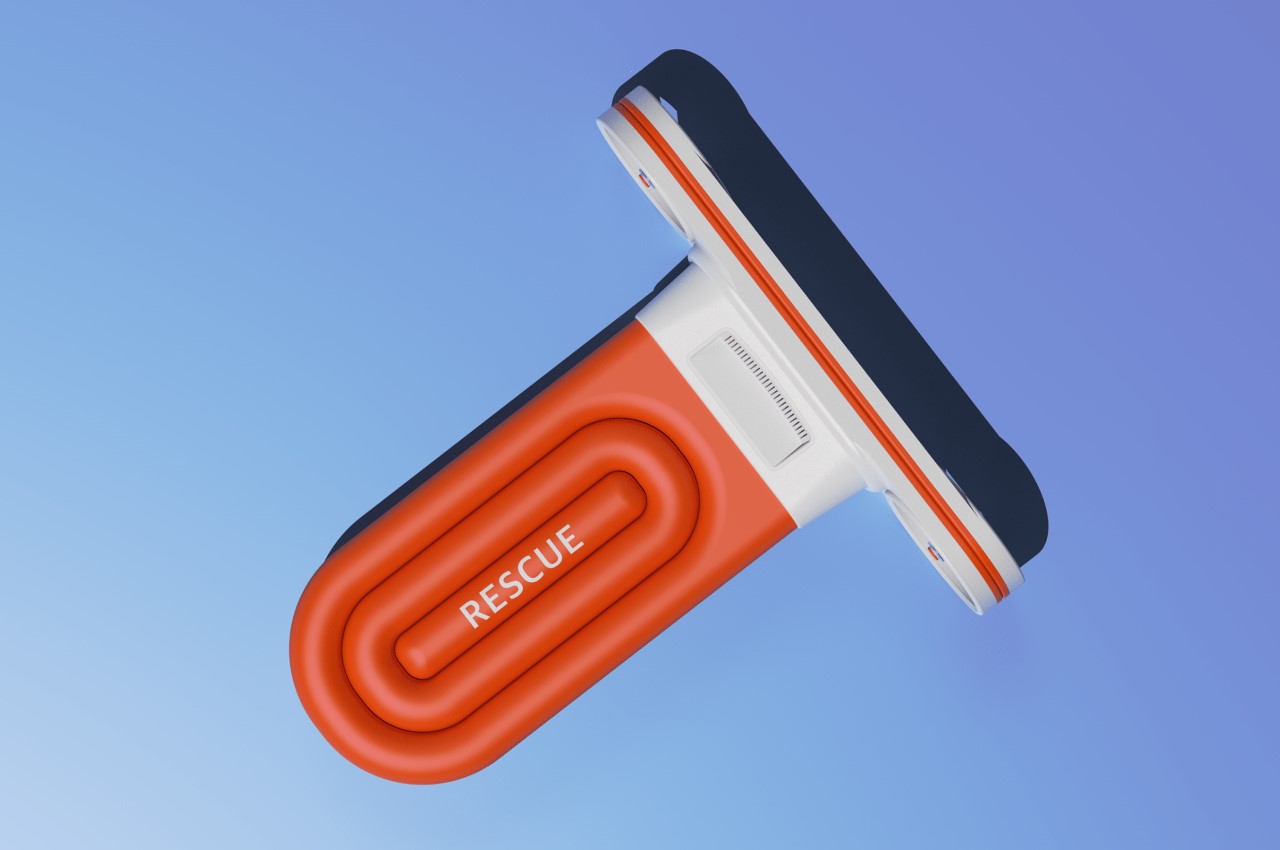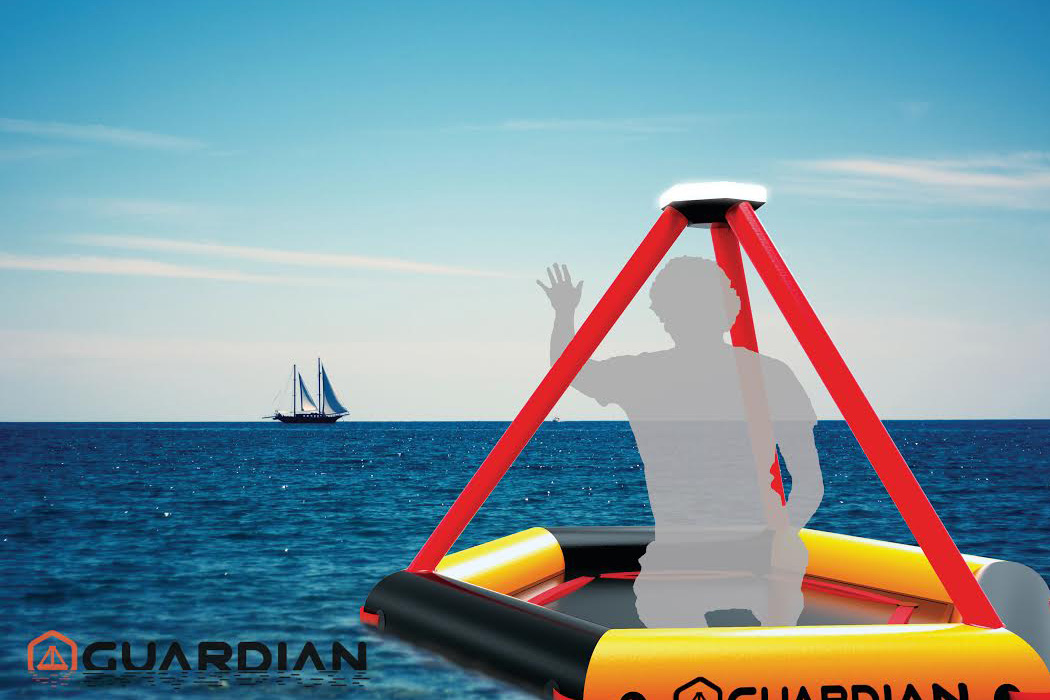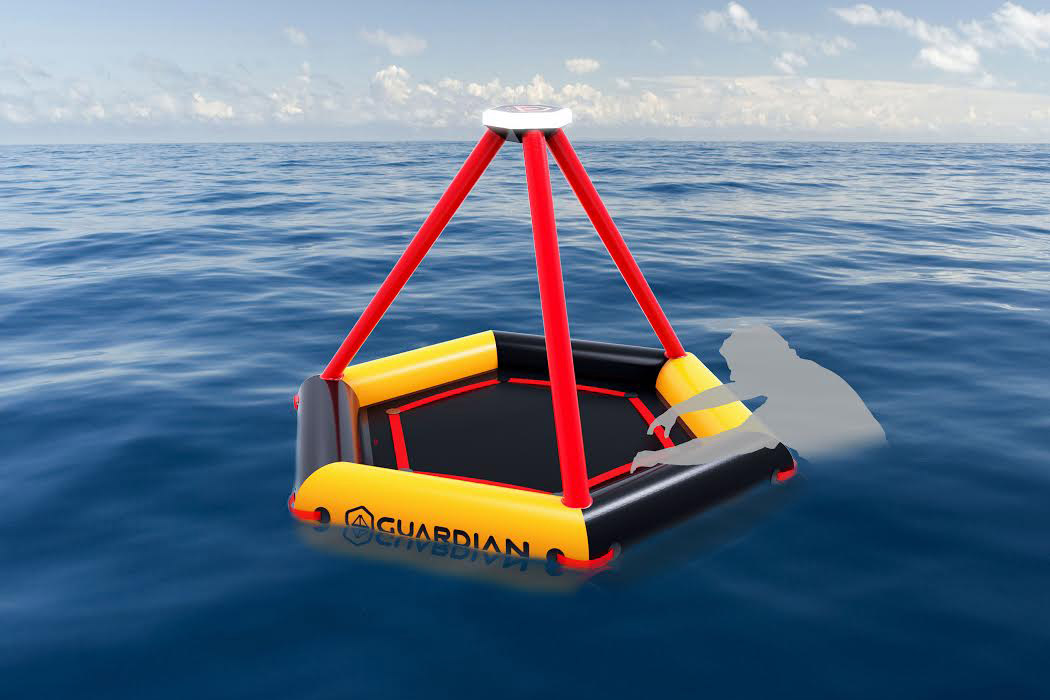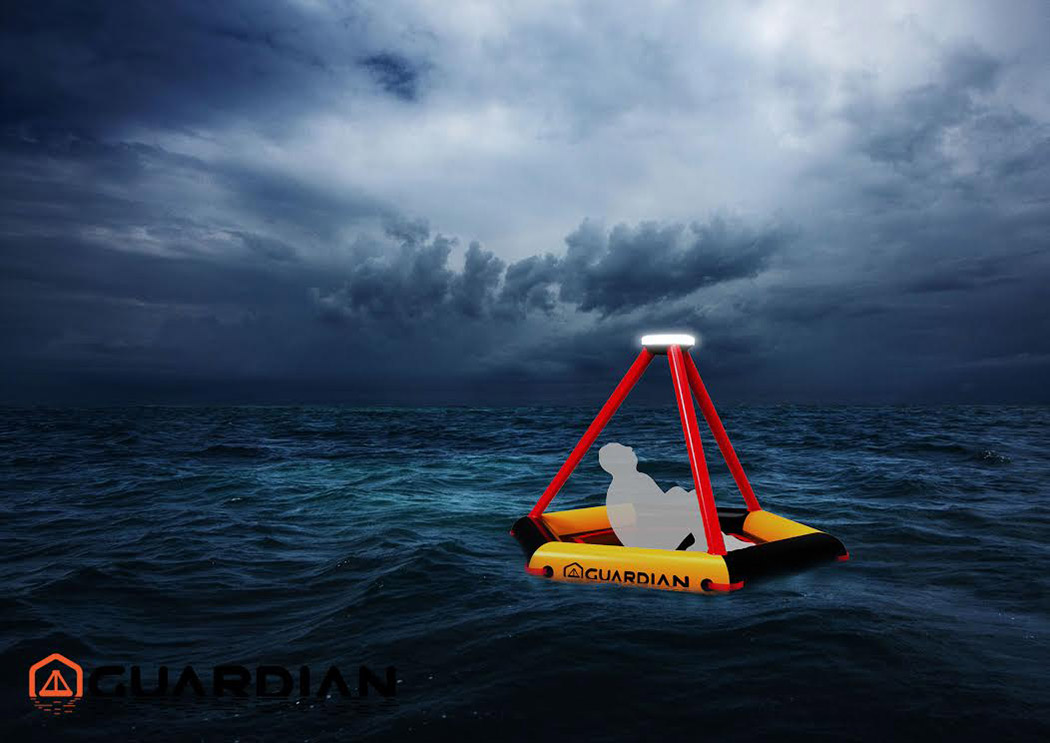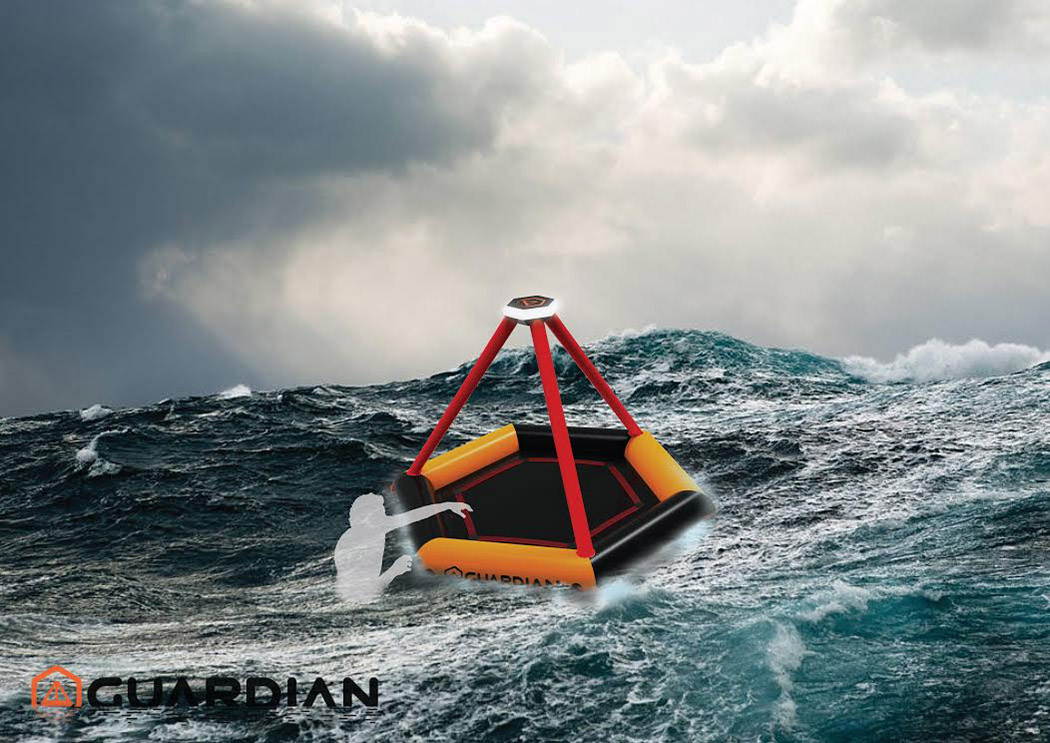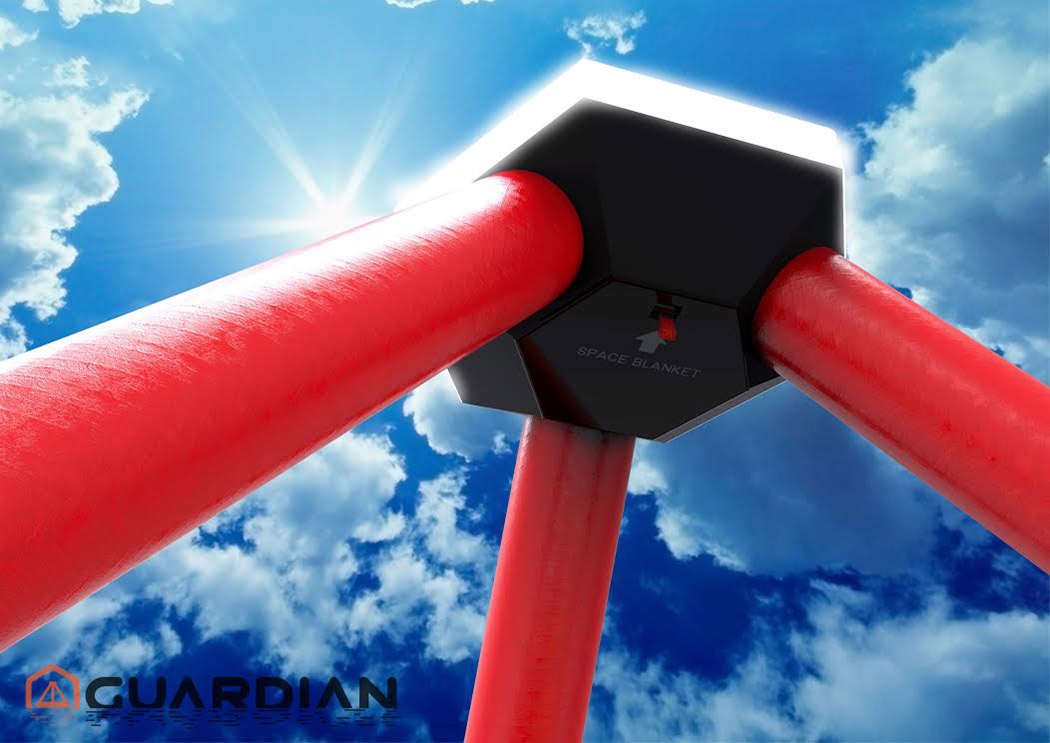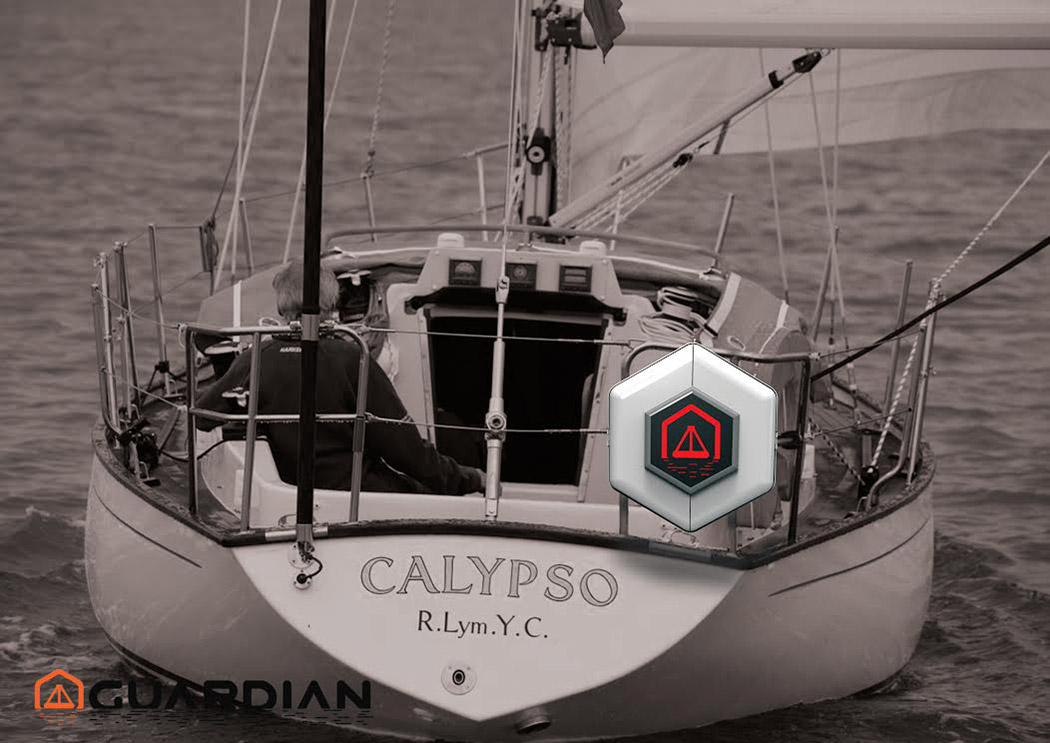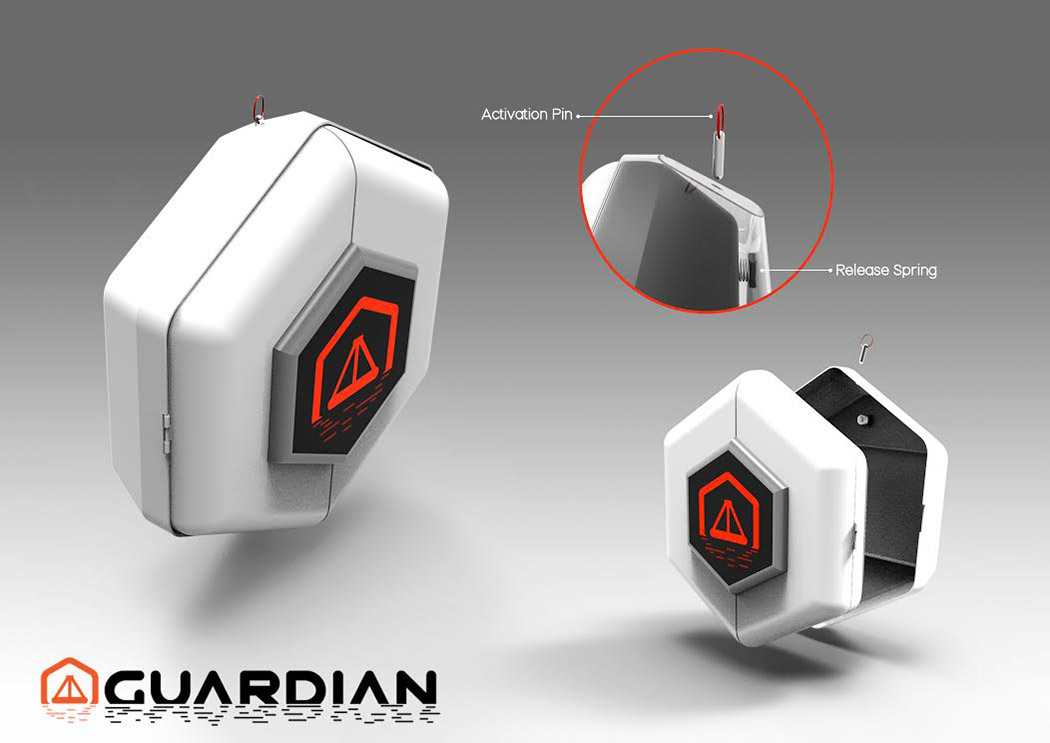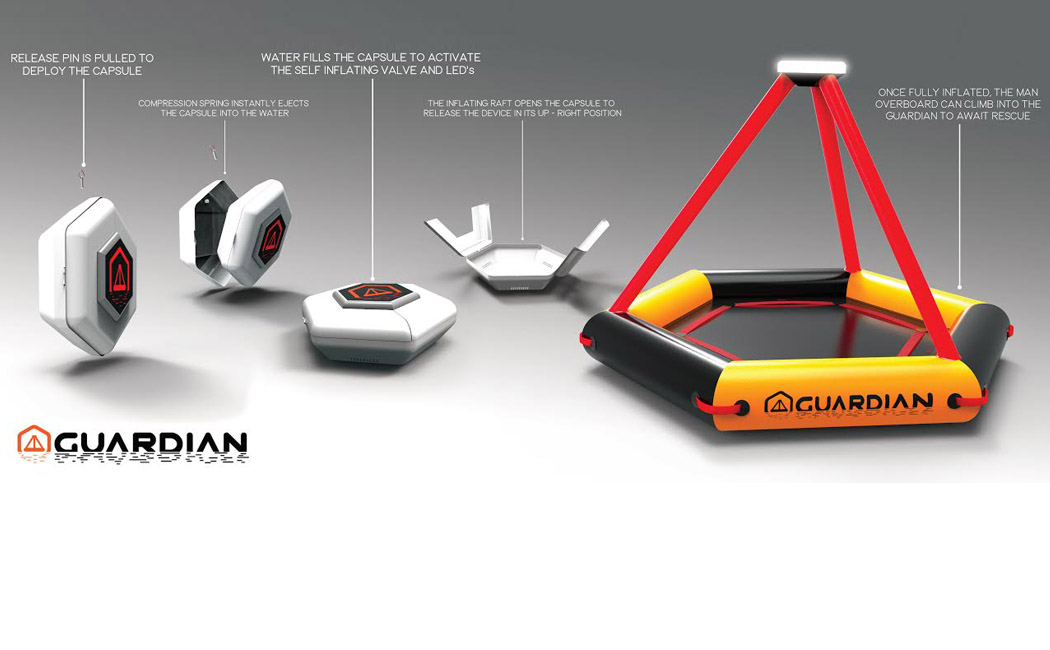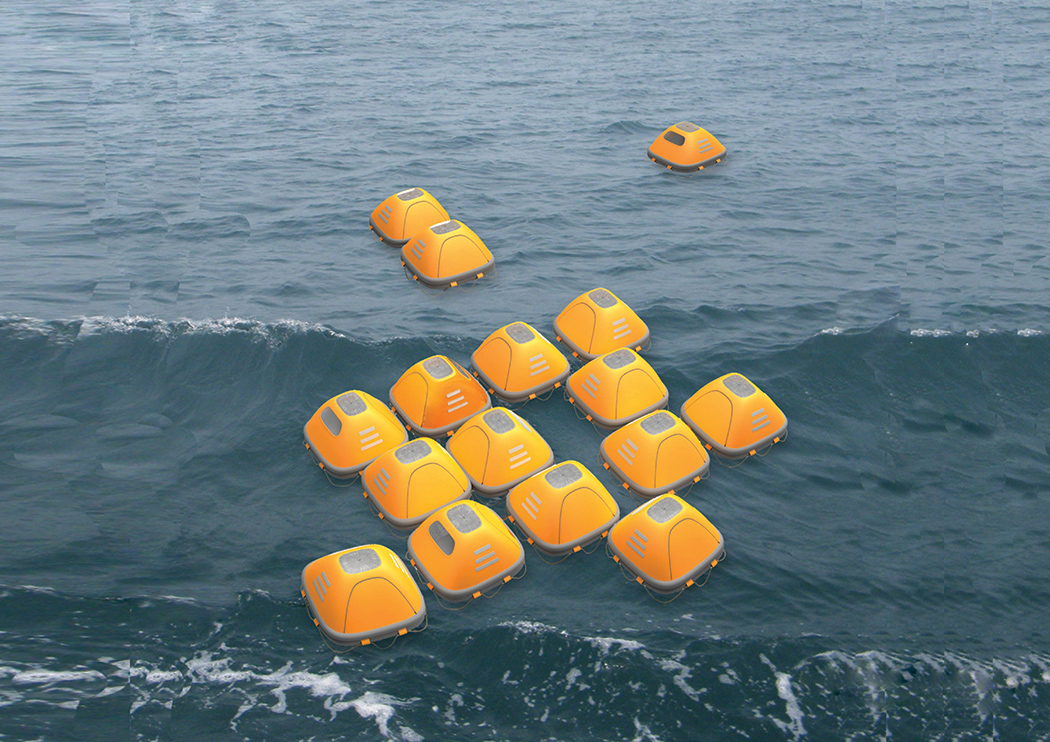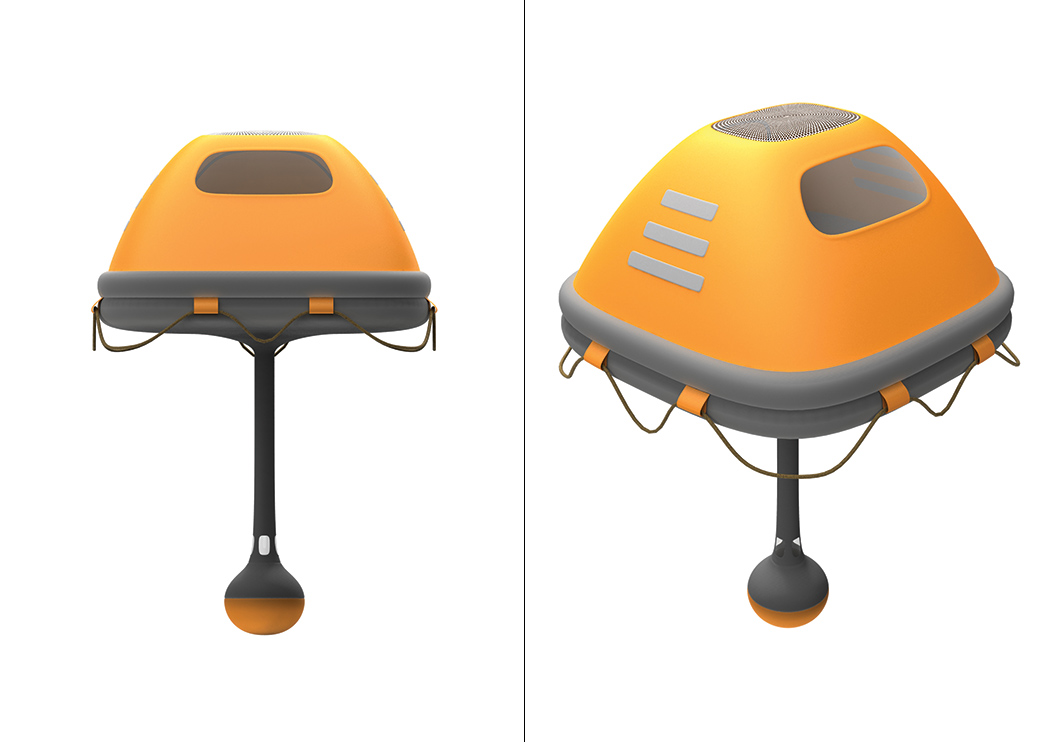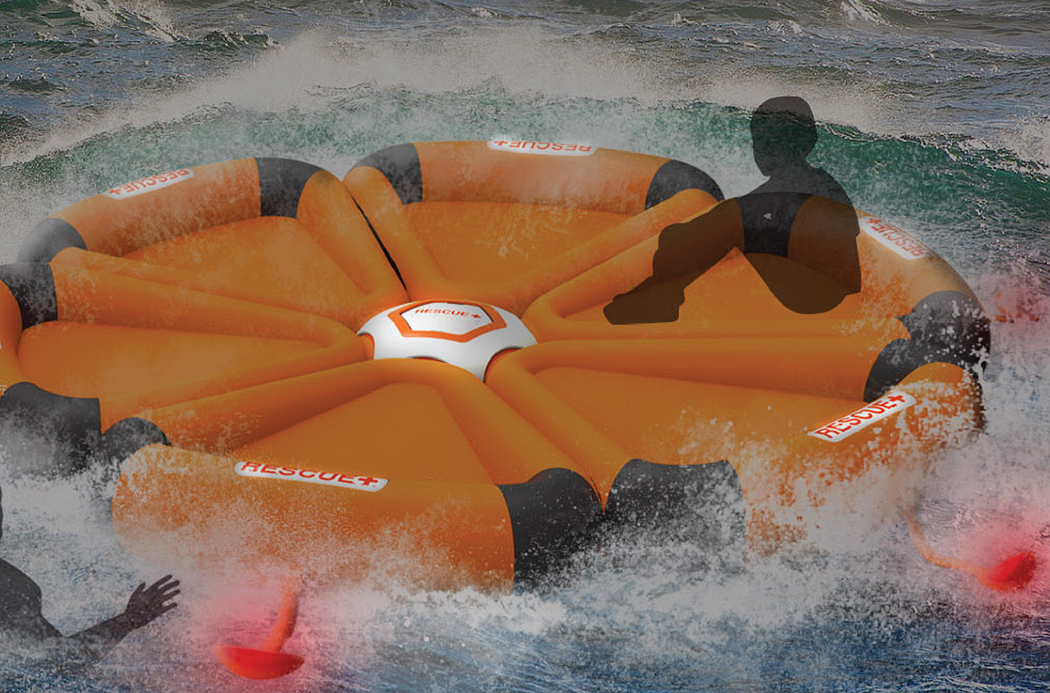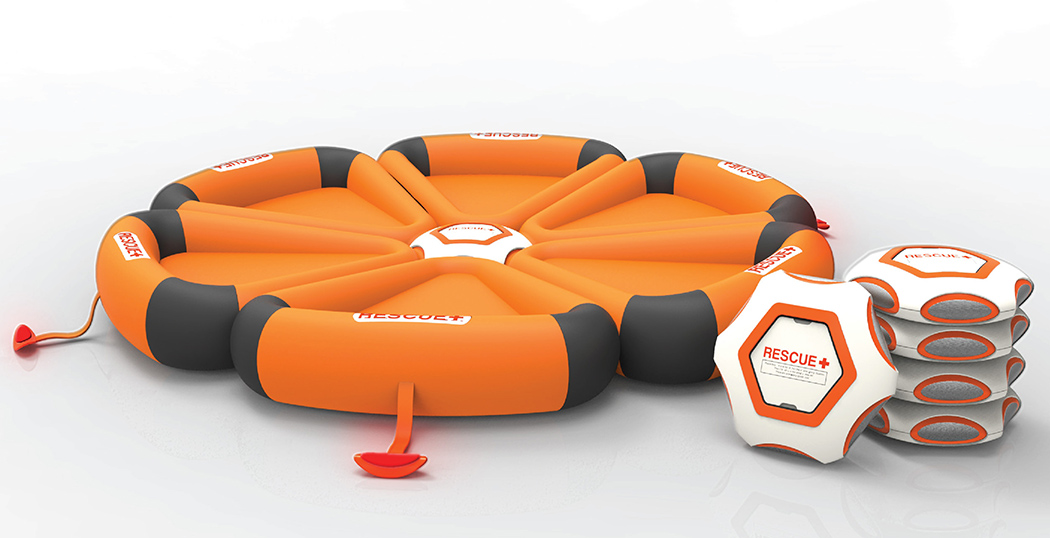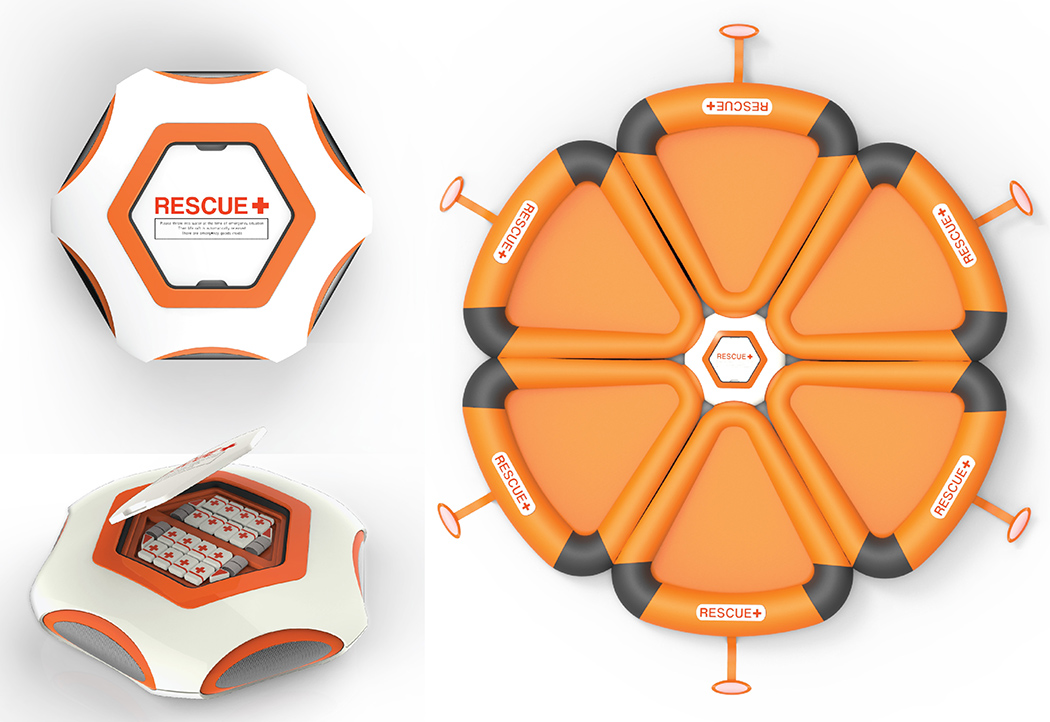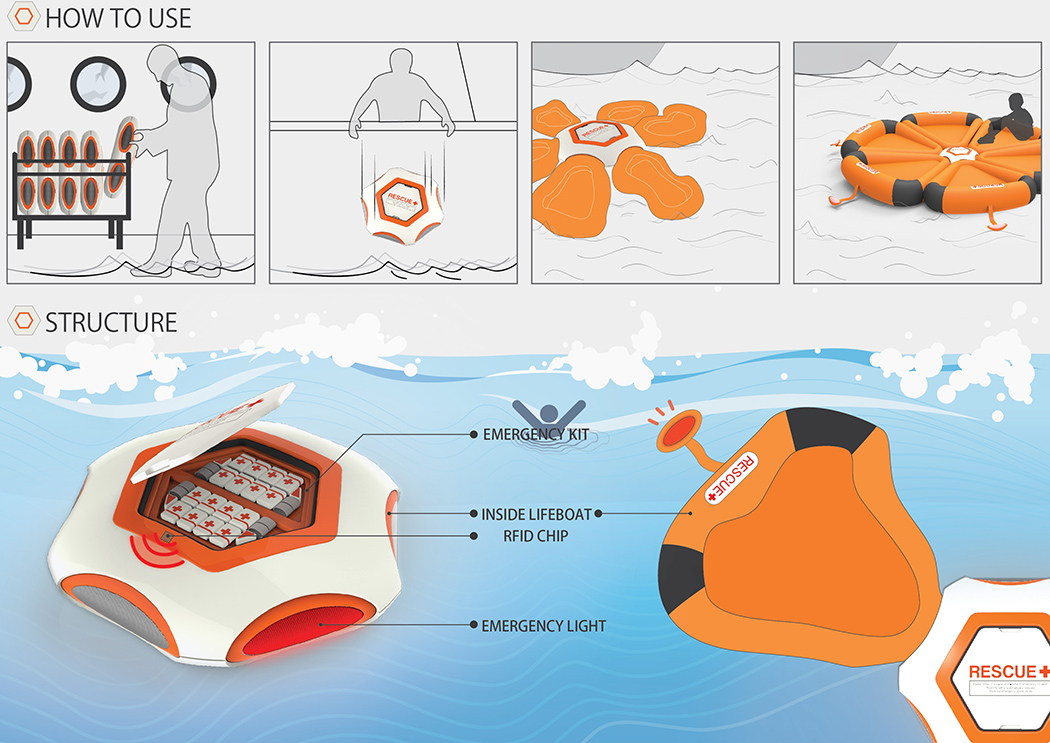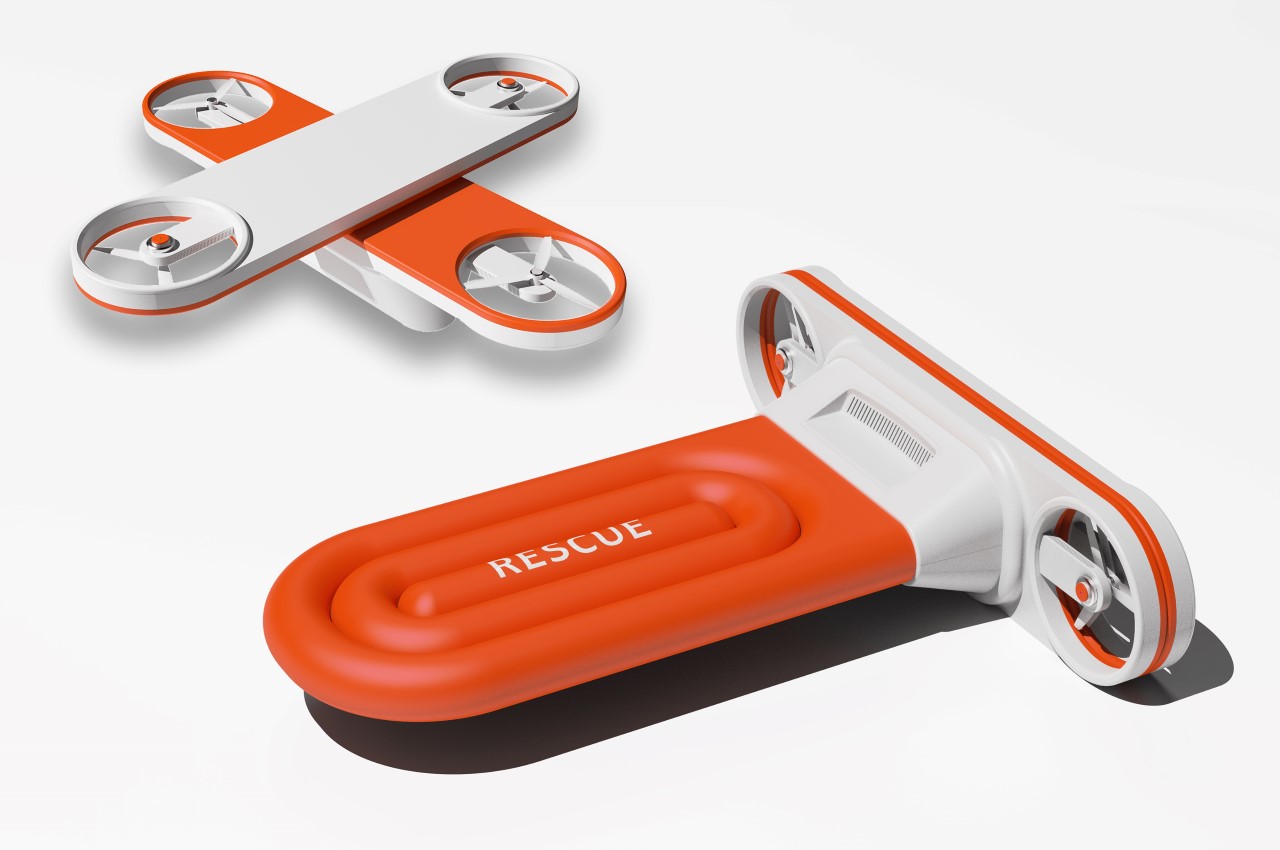
By combining the lifesaver tube with a drone, the LIFE DRONE from Hyunjun Choi can easily rescue people by keeping them afloat as well as transporting them to safety.
Building on what a drone is capable of doing, the LIFE DRONE is an amphibious rescue-device that can travel in air as well as on water. It comes with a unique format that allows it to go from your regular airborne quad-copter drone to a waterborne motor-raft whenever needed. The drone comes with a dynamic body that opens up to orient the propellers in an X formation to take to the skies. The base of the drone comes with an automatic inflating life-raft that deploys near the person who needs help. The drone then closes, going from an X-formation to an I-formation, and the propellers begin working underwater, to push the raft towards safety… along with the person on it.

The LIFE DRONE works quite like a life-raft, except it doesn’t need a human to throw it to the drowning person. Just ping the drone with the location of the person drowning and it takes off on its own. When it approaches the location, the inflatable raft automatically deploys and the drone descends into the water. Once the person climbs onto the raft, the drone then works almost like a motorboat, using the propellers to guide the raft to the nearest location of safety. It does this without requiring a lifeguard to jeopardize their life.
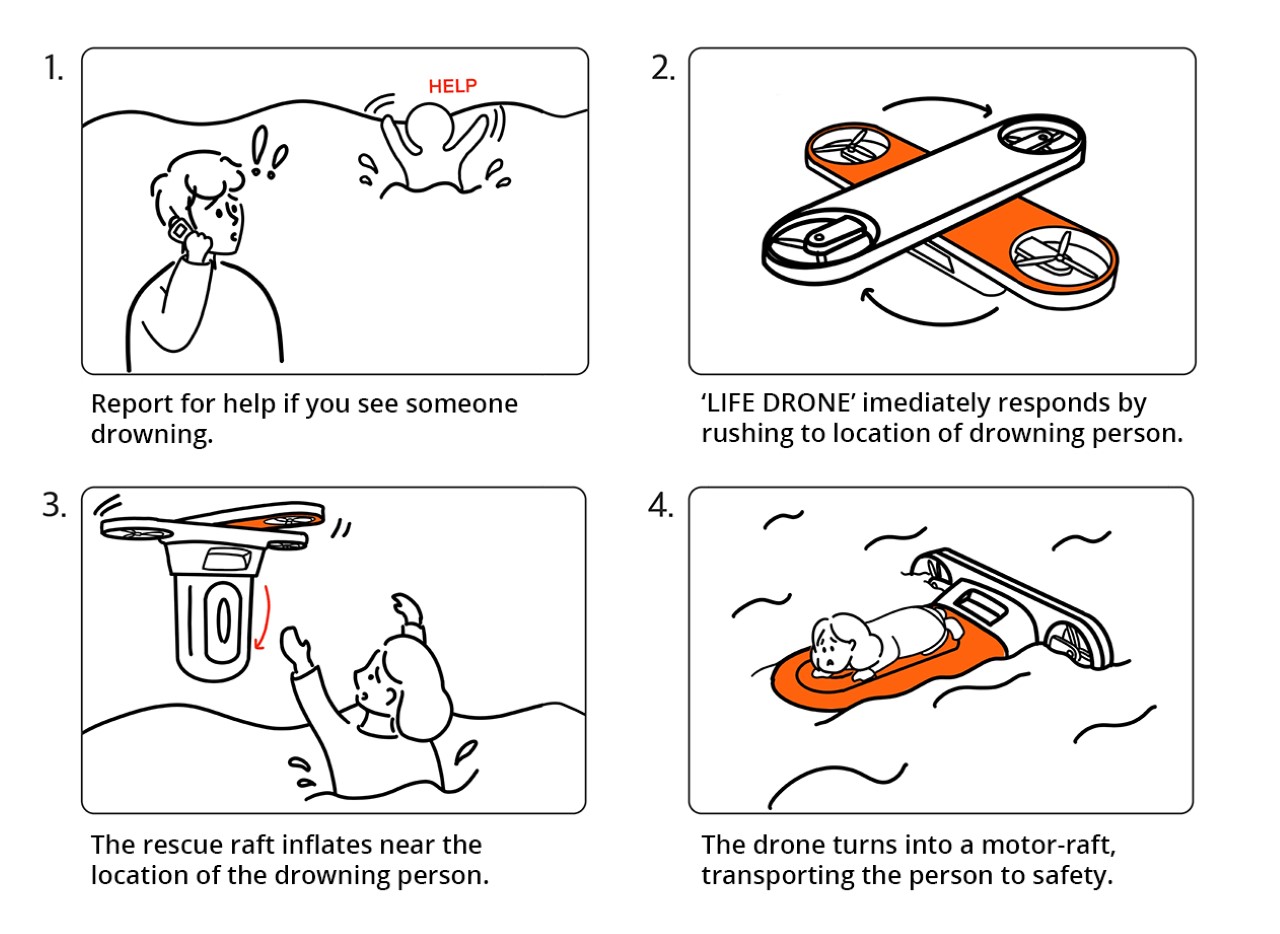
Although conceptual, the LIFE DRONE is an interesting idea that can definitely be built. Amphibious drones definitely exist, and with the LIFE DRONE, it’s just a matter of building out a drone that has enough power to carry itself in the air, and propel forward with the weight of a human on water. My guess is that the propellers and motors would be significantly larger if you had to build this out, and you’d need space for pressurized CO2 containers for the raft to deploy. That dynamic X-to-I format is interesting too (it reminds me of this drone concept), and I’d honestly love to see a robotics/drone company at least experiment with a prototype!
Designer: Hyunjun Choi
